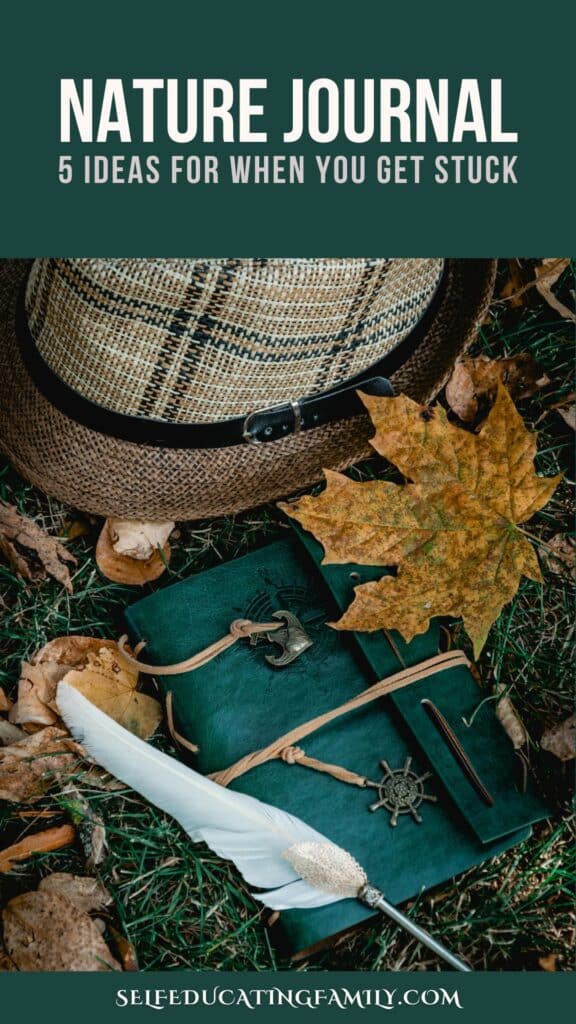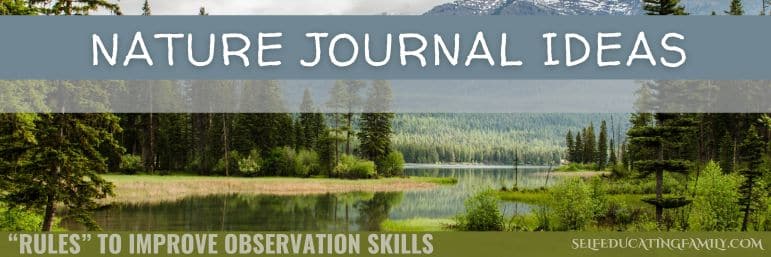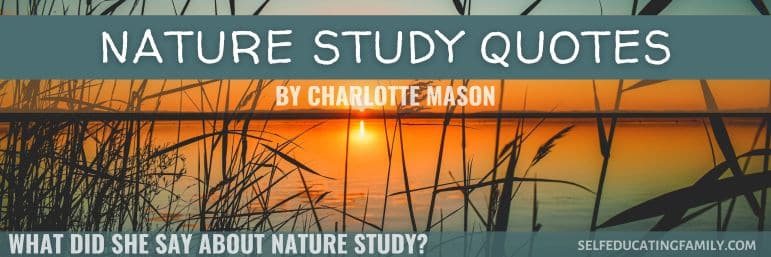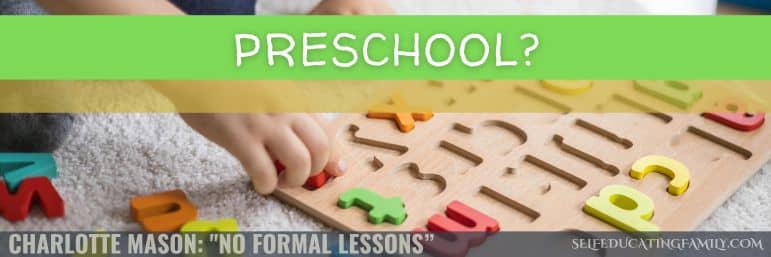What’s inside: 5 tips for Nature journaling ideas. Using words in your nature journal can help your kids focus on their observation skills. Does your kid get stuck sometimes because they can’t always draw what they see? Try these tips when drawing doesn’t live up to what they want it to look like. Get some actionable strategies in this post.
This post may contain affiliate links. If you find my content valuable and make a purchase through one of my links, I will earn a commission at no cost to you, which helps me keep this blog going so I can help you even more! I recommend products I trust and/or use myself, and all opinions I express are my own. Read the full disclaimer here.
Nature Journaling Ideas: a Confession
Confession: we were not great at nature journaling, so ideas could help. And now that my boys are grown, I’m continuing my study of how to do nature study with nature journals so I will be ready when the next generation comes along. Meanwhile you can benefit from these tips.
This post goes into more than just prompts. We’ll cover what to do if you get stuck. If you need more inspiration, go back to what Charlotte Mason said about nature.
Our biggest problem
My guys were not great artists. My youngest eventually liked drawing and painting and became very good at it. He even painted and sculpted miniature figures for fun. He still does, when he has time off of his college engineering studies.
But the inability to draw, or more specifically, the inability to capture on paper what they wanted to draw or paint and how they wanted it to look, was extremely frustrating. So they never practiced. And they never improved. Maybe their observation skills improved but it can be tiresome having the same observation, “That’s not what it looks like.”
So this post is designed to help you if you have the same problem.
Nature Journaling Ideas
Have you ever heard of drawing “rules” for nature study? Next time you go to draw in your nature journal, consider these guidelines that I’m calling “rules”.
Incidentally, I’m getting most of these ideas from my 2 favorite nature study books.
The Handbook of Nature Study by Anna Botsford Comstock is the go-to book for a complete curriculum of Nature study K-12. It’s not as traditionally structured, but you have enough content for all ages of nature study. Simply pick a topic and get ideas, knowledge, and content from the book. Do this once a week for your entire homeschool career and you and your kids will be more of a naturalist than 90% of everyone you meet.
Unless you use it in a homeschool co-operative. Then your GROUP will be more knowledgeable than 90% of people.
Interestingly, the Handbook has brief but really good ideas on how to do nature study in general, even though the book for the most part (since it is so large) covers every imaginable aspect of nature study in a thorough and detailed manner. This is the WHAT of nature study. Where you might not know something, it is covered. Encyclopedic, but in an extraordinarily engaging way.
The second book I can recommend is Keeping a Nature Journal by Leslie Roth. This book is a lot like a sample nature journal. Seeing these samples are key to understanding what a journal can be like. Leslie Roth has so many tips and tricks on the actual journal keeping that it’s a critical resource. Many of the ideas I present I gleaned from her.
“Rules”
You know the way the brushing your teeth has some rules you should learn? You know, the ones they say every time you go to one of your kid’s dentist appointments. “Rules”. Sort of. Really more of a routine you use until it becomes a habit.
Well, it turns out that using a nature journal can be easier if you have some “rules” like these.
Let’s review these one by one.
DRAWING “RULES”

1. Draw what you SEE
Sometimes we try to draw what we think we see. In nature journaling, you want to record your observations.
For example, you see a bird. So you draw something like 🐦. But did it really look like that? What exactly did you see?
Where was the bird and what was it doing? Was it a shadow flying overhead? Did you just get a fleeting glimpse? Did it sing? Was it in a tree? Did you glance it or get a really good look at it?
Make a mental picture and then draw it. With animals, some people take a photograph and then draw from that.
Or an interesting way to learn to watercolor paint birds, is to start with a bird outline template and then paint in the color. This is a learning technique promoted by Lily & Thistle. By separating drawing from painting, she breaks the skills into different areas and you can learn one without the frustration of trying to do it all at once.
Learning to draw what you see
Two excellent resources we used for learning to draw what you see are Drawing With Children and Drawing on the Right Side of the Brain.
Mona’s book is great for the beginner, and the Brain book is good for people who want to improve their skills even more. We used both books and studied drawing one semester for handicraft in our homeschool group.
2. It doesn’t have to be perfect
This was one of our BIG obstacles. I’m a recovering perfectionist and at least one of my sons inherited this. He didn’t like to draw primarily because he couldn’t make it look right.
This attitude can impede your progress with nature study, particularly using a nature journal unless you have other ways to record your observations besides drawing.
Learning to use quick sketches to give an impression of what you see is important.
Maps are good here too because they lean towards representational drawing. For instance, map out your backyard from a top view. A big circle represents a tree. A line is the fence. And a box is the shed. Cross-hatching can be the grassy lawn if you label all of this. You’re not trying to get an aerial photograph, you’re just making a top view. It’s a way to realize that all of your drawings don’t have to be masterpieces.
3. The more you draw, the more you improve your skills
Even very talented people can’t get better unless they practice. I think this is self-explanatory.
But it can be 5 minutes a day or 15 minutes twice a week. It doesn’t have to be a marathon session.
A good idea here is to go to a familiar location and make a nature journal entry. After journaling regularly for the school year, go to the same location again. Then compare your entries. Do that for a few years in a row. Your children will see their own improvement.
Side note: we used this technique with essay writing because that’s another learning area where your child is making incremental improvement which is hard to recognize daily.
4. Use words to describe what you can’t capture
When you are trying to sketch something, but you can’t get it right – either a texture is too complex, or the coloring is too varied, or the composition is too busy – whatever. Simply write down a few words to clarify your drawings.
Using words in key areas can really help your observation skills.
Another way to use words with your journal sketches is to “correct” how a picture turned out. For instance, if you drew a bird but it turned out too skinny, jot down a phrase like “the bird was plumper than this.”
5. Write down questions
Another way that you can use words in a nature journal is to write down questions that you think of as you make observations. Here are some examples:
- What will this tree look like in spring (or fall or winter)?
- Who made this track?
- How did that limb break off of the tree?
- Who is making that bird song?
- What’s the name of this wildflower?
It’s just a simple way to add depth to your observations. You may be able to answer the questions, but you may not. You can try to answer them by doing more study at a later time.
Try these next time you open your journal
Next time you get stuck and you need ideas for nature journaling, wondering what else to record, think in words and see if that doesn’t spark some new observations and ideas.

Keep on Learning
If you would like more ideas for nature journaling, then try my One-Week Challenge: Get Outdoors with Nature Study.
Get the One-Week Video Nature Study Challenge!
In just 5 days, you can jump start your nature studies & using a nature journal with easy habits and routines from this course. Special launch pricing now!








